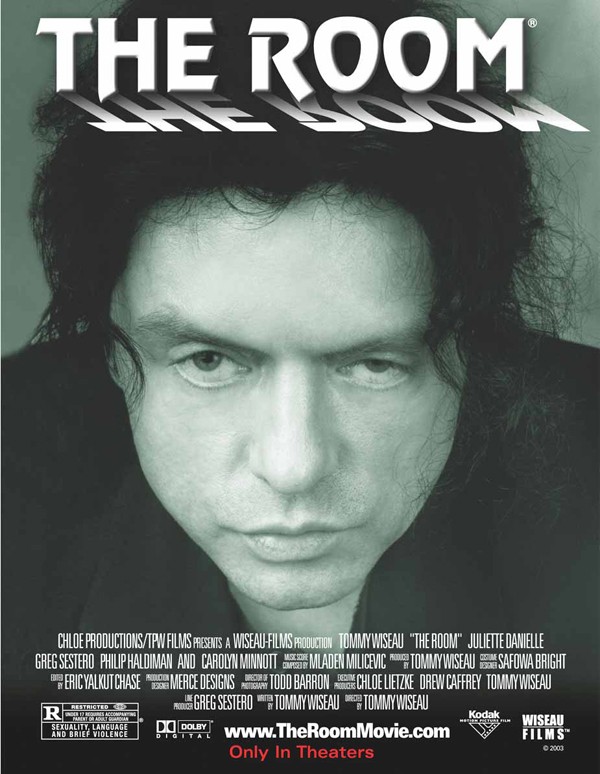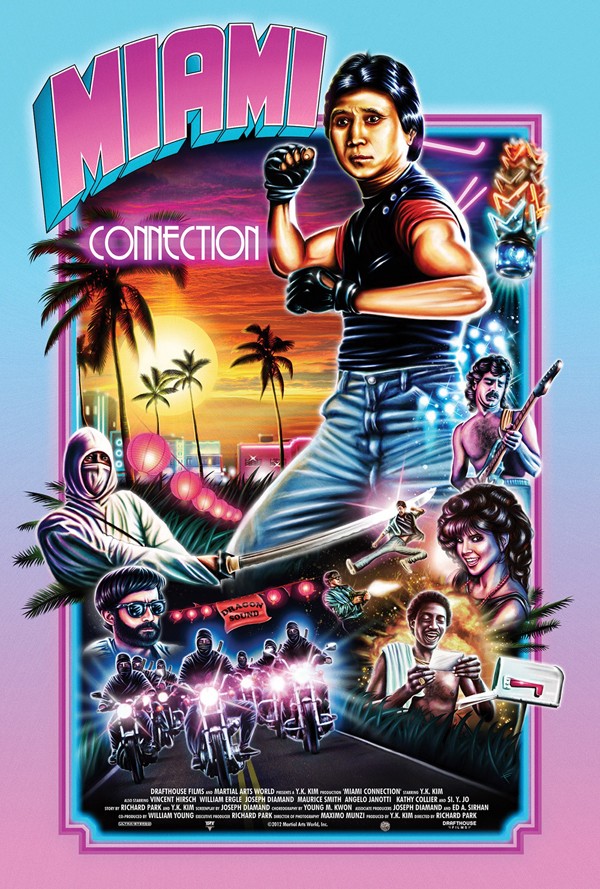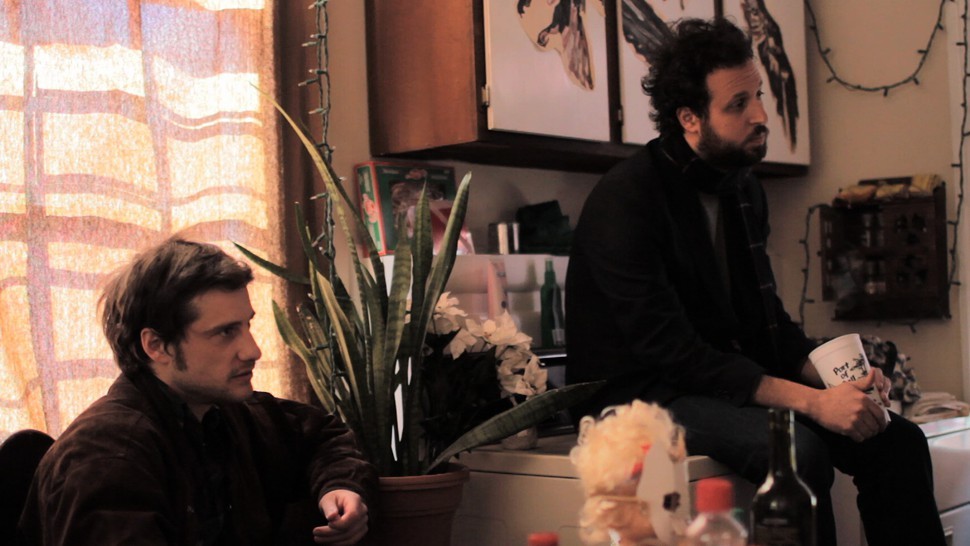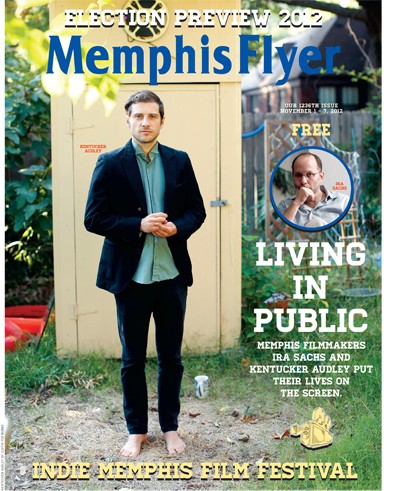As Meanwhile in Memphis: The Sound of a Revolution premieres November 2nd at the Circuit Playhouse as a part of the Indie Memphis Film Festival, fans of recent Memphis music history will have a triumph of their own.
Directors Robert Allen Parker and Nan Hackman’s biggest coup may have been convincing local indie-rock godfathers the Grifters to reunite after more than a decade of inactivity. The band was both one of Memphis’ biggest local draws and most successful exports of the 1990s, releasing several LPs, EPs, and singles (the 1994 full-length Crappin’ You Negative received rave reviews from publications like Rolling Stone and Spin) and touring extensively until around 2000, when exhaustion and the emergence of new projects and opportunities led the Grifters to slow things down and ultimately disband.
“We toured a lot,” the band’s singer/guitarist Scott Taylor says. “When we first took a break from all the touring, we weren’t in a hurry to get back in the van. The musical atmosphere had changed, and the stuff we were doing people weren’t as interested in — it got harder to get good shows. And we were all excited about our new bands.”
So the members of the Grifters went out on their own — Taylor with the Porch Ghouls (“We toured with Kiss and Aerosmith for almost two years,” he says) and Chopper Girl/Memphis Babylon; singer/guitarist Dave Shouse with Those Bastard Souls, the Bloodthirsty Lovers, and, most recently, >mancontrol<; and the rhythm section of Tripp Lamkins (bass) and Stan Gallimore (drums) with Dragoon.
Earlier this year, however, the group received an intriguing offer from the directors of Meanwhile in Memphis, who were looking to book bands for an after-party for the film’s premiere.
“Nan and I decided to make them an offer, even though we knew that the odds of it happening were slim to none,” Parker says. “There were even some people in the Memphis music community who told us that it could never possibly happen. I sent letters to each of the Grifters proclaiming how important they are to our documentary, to their fans in Memphis, and to the legacy of Memphis music altogether.”
“None of us were particularly interested in reliving the past,” Taylor says. “We were more into moving forward in our own directions. With a few exceptions, I’m not really into the ‘cool ’90s band goes back on the road’ thing. It didn’t seem cool to be like, ‘Hey, look at us. Look at what we did in the ’90s.'”
“Never say never,” Parker says.
“The reason we’re doing a reunion now is the documentary,” Taylor says. “The movie talks about our role in the Memphis scene of the ’90s. We all felt it was appropriate to play the show in conjunction. Over the years, we’d get these phone calls from out in the wilderness,” Taylor says. “Some guy would call and say, ‘You guys were my favorite band. I want you to play my wedding.’ It was never anything serious. Of course, we are hard to get in touch with, so maybe that was it too.”
Whatever reluctance the Grifters may have felt at one time about getting back together, the band is definitely enjoying the experience of reviving the project now — at least for one night.
“Practice has been really great. The songs sound better than ever, I think,” Lamkins says.
“It’s amazing,” Taylor agrees. “It’s been refreshing to come back to some of the songs. We’re all pleased that the material doesn’t sound too dated. We were always a band that tried to write timeless songs, songs that weren’t stuck in a particular genre.”
“I expected, at some point (but not knowing when), the Grifters to play again due to the sheer awesomeness and intensity of the band as a unit,” says Sherman Willmott, founder of Shangri-La Records, which released Grifters records through the ’90s until the band signed with Sub Pop.
The Grifters will perform this Saturday at the Warehouse for the Meanwhile in Memphis premiere after-party, along with local heavy-hitters the Hi Rhythm Section, Al Kapone, and Hope Clayburn. What happens with the group after that, though, is anybody’s guess.
Willmott sees the band getting much-deserved recognition.
“Because the Grifters’ hiatus dovetailed with the explosion of the internet (circa 2000), the post-Napster generation knows nothing about the power of this band,” Willmott says. “Given the intensity of today’s digital word of mouth, if the Grifters Mach II is one-fourth as good as their first go-round, there is no doubt in my mind that they will have thousands of new fans overnight.”
“We’re not ruling out doing more shows,” Taylor says. “Nothing is off the table as long as we’re enjoying ourselves.”
One recent highlight is a series of videos based on recordings from their album One Sock Missing. Each song is directed by a different person. One is directed by bassist Lamkins.
“It’s been fun,” Taylor says. “Sherman came to us and said he was tired of seeing our songs on YouTube without any real videos, just stills or homemade stuff. I’m glad we’re doing it. A lot of local filmmakers have done amazing jobs on the videos so far, and the project is moving along very organically.”
www.shangrilaprojects.com/the-grifters
Meanwhile in Memphis After-Party
With The Grifters, The Hi Rhythm Section, Al Kapone, and Hope Clayburn’s Soul Scrimmage
The Warehouse, Saturday, November 2nd, 9 p.m.




